|
|
TRANSLATIONS IN KHMER |
|
|
|
|
|
|
|
The Documentation Center of Cambodia translates books from English
into Khmer (Edited by Youk Chhang); we do not translate from Khmer into other languages.
Please also note that DC-Cam does not fund the translation or
publication of books. The authors are responsible for this, or for
locating funding for both purposes
|
|
|
|
|
 |
First They Killed My Father:
A Daughter of
Cambodia Remembers
Loung Ung
Translated by Norng Lina
2002
(USD15)
In this book, Loung Ung tells the story of her life under the Khmer Rouge.
When she was five years old, she and her family were forced to leave their
comfortable life in Phnom Penh when the Khmer |
|
Rouge took control of the country. Ms. Ung was trained as a
child soldier, while her other siblings were sent to labor camps.
After the regime fell, she and her surviving siblings slowly
reunited.
Funding provided by the author.
|
|
|
|
|
|
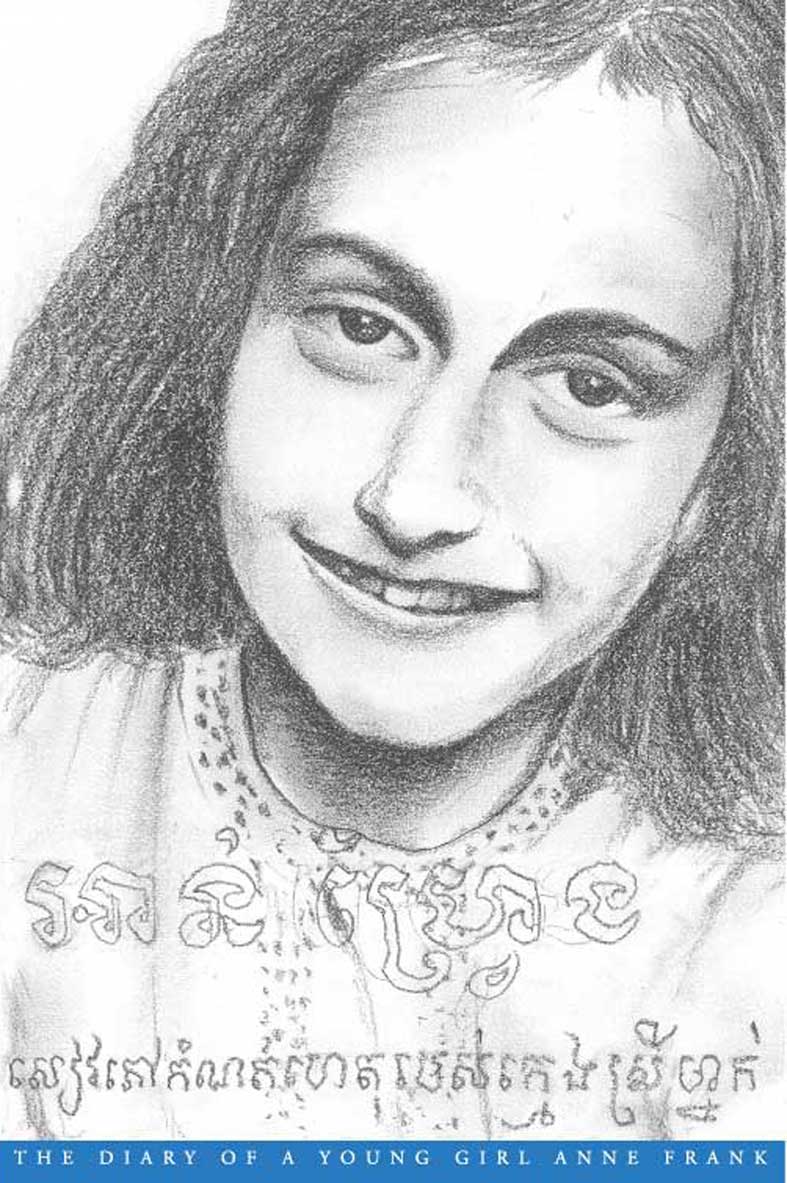 |
The Diary of a Young Girl
Anne Frank
Translated by Ser Sayana
2002
First published in 1947, millions of people have read the diary of
13-year old Anne Frank. She and other members of her family hid
in the back of an
Amsterdam warehouse for two
years in an attempt to escape detection by the Nazis. Anne Frank
died in the |
|
Bergen-Belsen concentration camp in March 1945, three month before
her 16th birthday.
Funding provided by the Government of the Netherlands, Bangkok, Thailand.
|
|
|
|
|
|
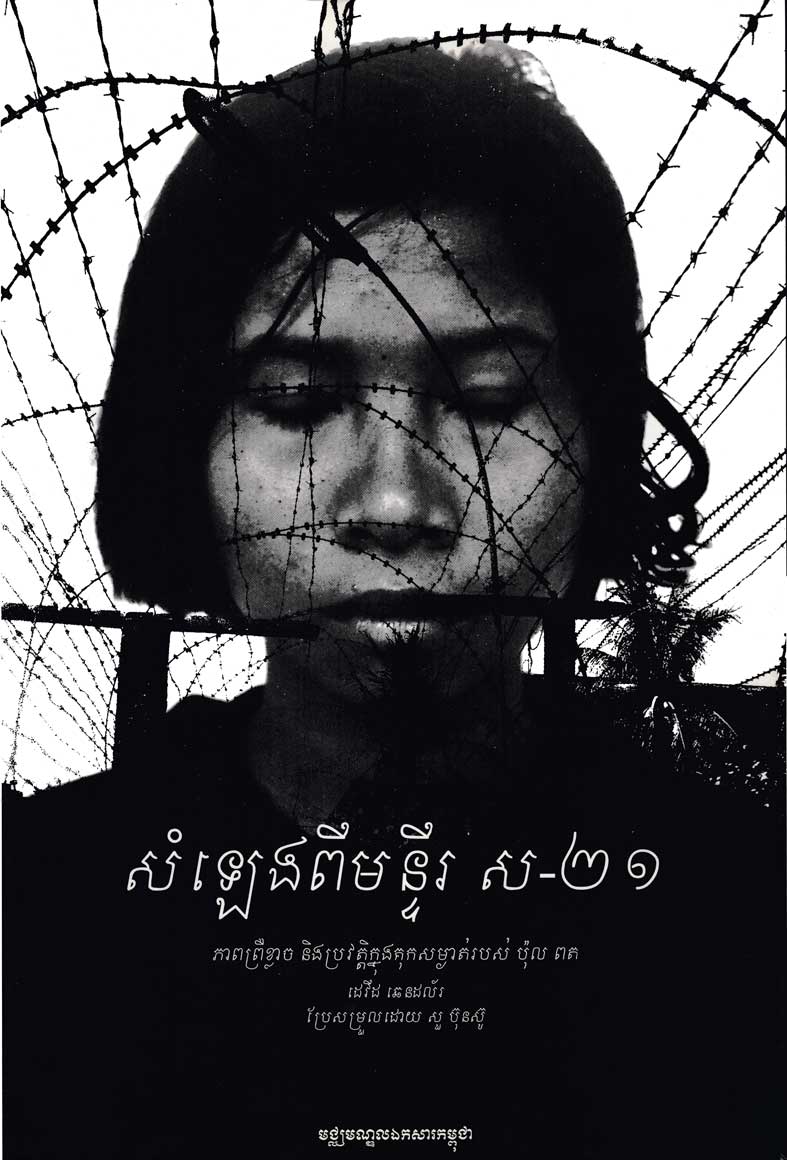 |
Voices from S-21:
Terror and History in Pol Pot’s Secret Prison
David Chandler
Translated by Sour Bonsou
2003
(USD10)
Historian
Chandler
examines the Khmer Rouge regime through S-21, a secret prison in
Phnom Penh where over 14,000 people died and less than a dozen
survived. Using archival materials and |
|
interviews with survivors, he traces the culture of obedience and
its attendant dehumanization, which made it easier for the Khmer
Rouge to torture and kill their “enemies.”
Funding provided by US Agency for International Development, the
Government of the Netherlands, and the Government of Sweden.
|
|
|
|
|
|
 |
The Khmer Rouge Division 703:
From Victory to Self-Destruction
Vannak Huy
2003
(USD15)
One of the most favored of the Khmer Rouge’s nine military
divisions, Division 703 was composed of 5,000 to 6,000 peasants,
primarily from Kandal province. At the end of 1975, its soldiers
with |
|
“clean” backgrounds were given positions at Tuol Sleng (the
central-level prison also known as S-21) or its branch office S-21D
(Prey Sar prison) and various government offices. At least 567 of
these men were later branded as “enemies” of the regime and executed
at S-21.
This monograph examines the careers of 40 soldiers who worked in
Division 703. Most of those who survived the 1979 defeat of the
Khmer Rouge returned to their villages in the early 1980s, often
after spending time in prison as a result of their involvement with
the regime.
Funding
provided by the United States Department of State, Bureau of
Democracy, Human Rights and Labor.
|
|
|
|
|
|
 |
Lucky Child
Loung Ung
Translated by Phat Rachana
2004
Cambodian-American Ung’s memoir describes her life in America and
contrasts it with that of her sister, who remained in Cambodia after
the Khmer Rouge regime fell. |
|
Funding provided by the author.
|
|
|
|
|
|
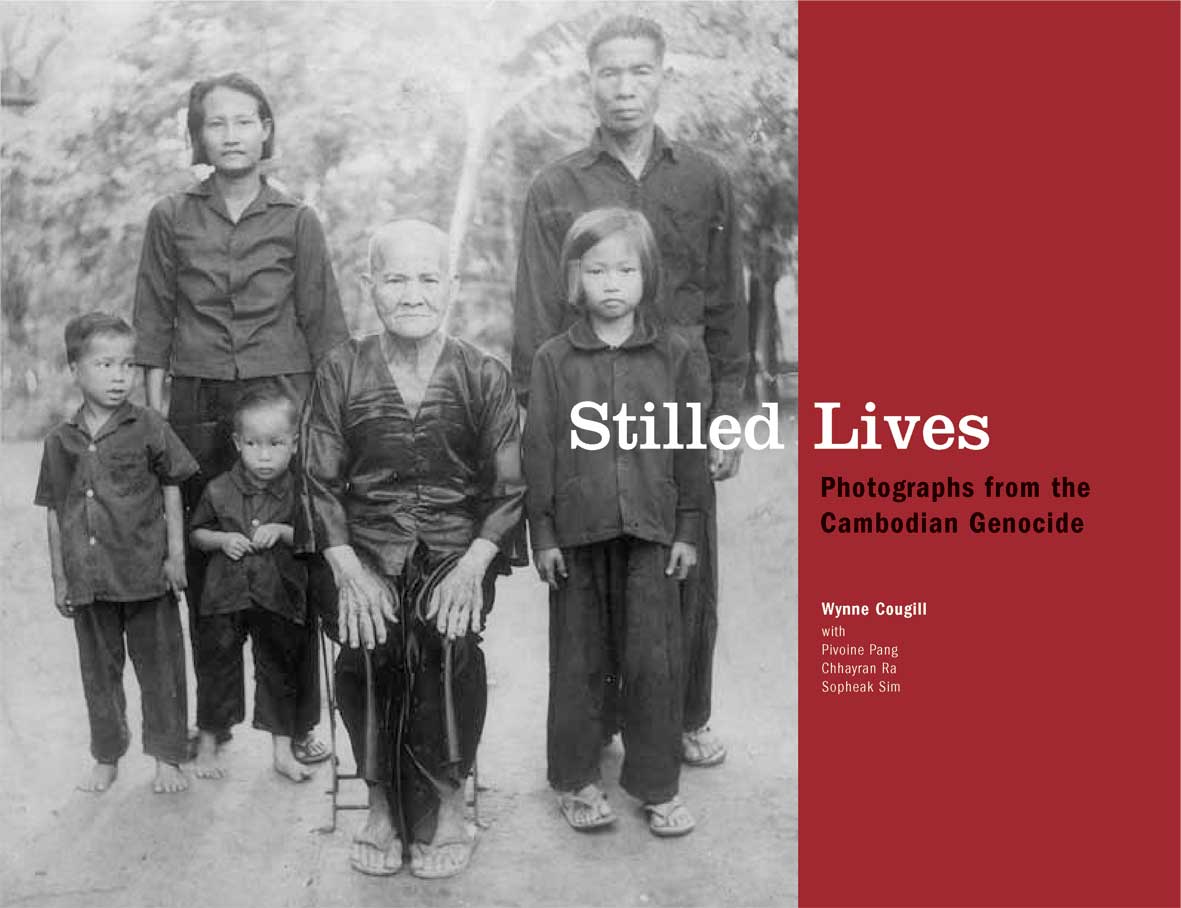 |
Stilled Lives:
Photographs of the Cambodian Genocide
Wynne Cougill with Pivoine Pang, Chhayran Ra, and
Sopheak Sim
Translated by Chy Terith
2004
(USD15)
|
This book contains photographs and essays on the lives of 51 men and women, who joined the Khmer Rouge during the 1960s and 1970s. They were what the Khmer Rouge called “base people”: those from the peasant class who generally were treated less harshly than the “new people” (city dwellers and those associated with the former Lon Nol regime). The people profiled here served the Khmer Rouge as farmers, soldiers, security personnel, or cadres (those with some degree of command responsibility). Although most Cambodians view the former Khmer Rouge as cruel and sometimes evil, this book shows that they and their families faced the same struggles and hardships as their victims, and points to our common humanity.
Funding provided by the National Endowment for Democracy (NED).
|
|
|
|
|
|
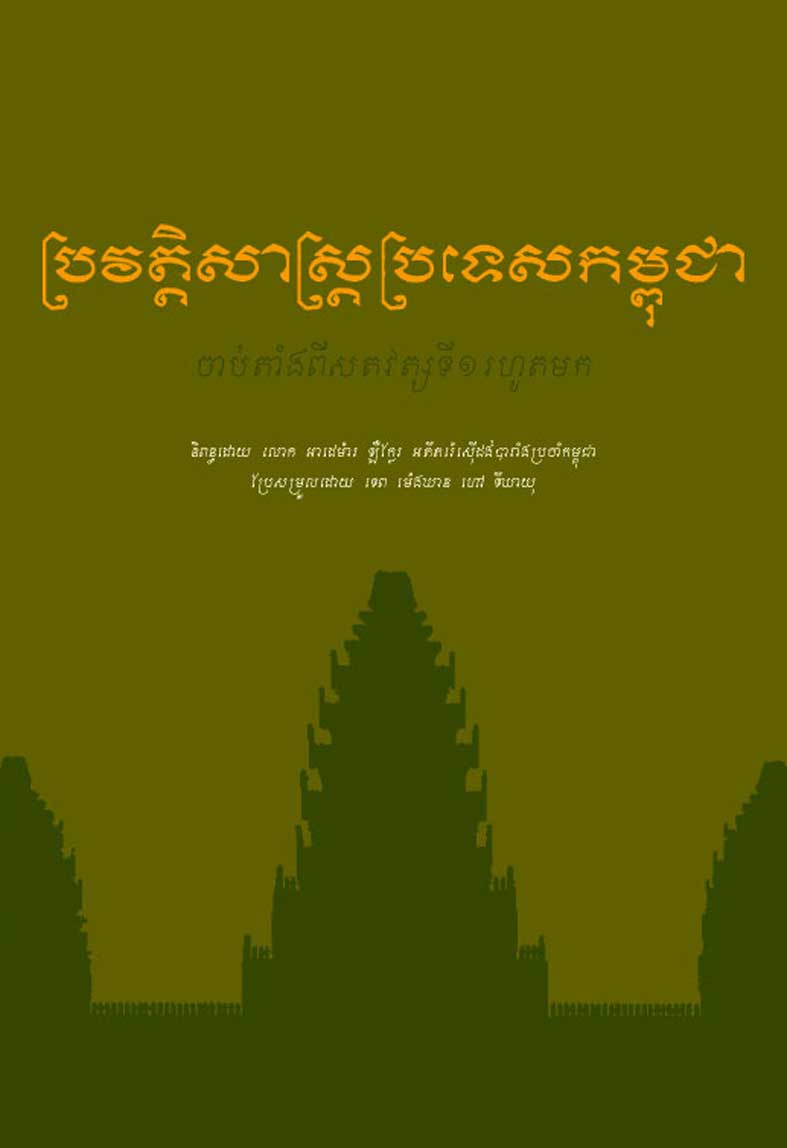 |
Histoire du Cambodge
Depuis Le 1er Siècle
de Notre
Ère
Adhemard Leclère
Translated by Tep Meng Kheang
2005
(USD20)
|
|
|
|
|
|
|
|
 |
When the War Was Over:
Cambodia and the Khmer Rouge Revolution
Elizabeth Becker
Translated by Sokha Irene
2005
(USD20)
Reporter Becker, who covered Cambodia for the Washington Post,
examines the historical patterns of violence and authority in
Cambodia that allowed the Khmer Rouge to ascend to power and |
|
made the genocide possible. She also examines the roles of the
United States
and other members of the United Nations in betraying Cambodia. The
book is based on the author’s personal experiences and interviews
with Cambodian leaders and ordinary citizens.
Funding provided by US Agency for International Development (USAID),
the Government of Sweden and the US Embassy in Phnom Penh.
|
|
|
|
|
|
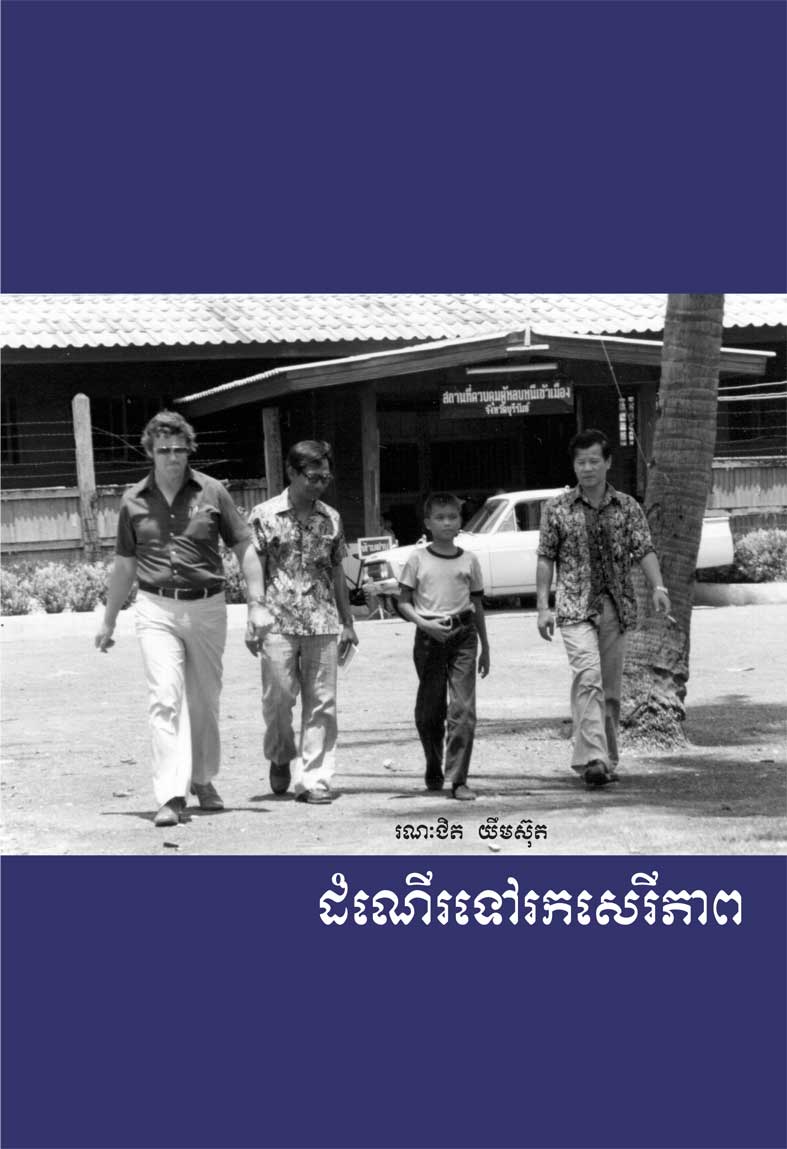 |
Journey to
Freedom
Ronnie Yimsut
Translated by Eng Kok-Thay
2006
(USD15)
In this memoir, Cambodian-American Yimsut recalls his experiences
as a 15-year old boy who survived five years of civil war, three
years in a labor camp, Thai prison, and refugee camps before
becoming a |
|
naturalized
US citizen.
Funding provided by NZAID (New Zealand) and the author.
|
|
|
|
|
|
 |
Brother Enemy
Nayan Chanda
Translated by Tep Meng Khean
2007
(USD20)
This book by the bureau chief for the Far Eastern Economic
Review examines the third Indochina War and offers an
explanation for the Cambodian genocide. Chanda posits that the Khmer
Rouge built their revolution at breakneck speed to prepare for a
life-and- |
|
death struggle against the Vietnamese, and the means they used to
do this was ideological “purification.”
Funding provided by the Government of Sweden and US Agency for
International Development.
|
|
|
|
|
|
 |
A History of Democratic Kampuchea (1975-1979)
Khamboly Dy
2007
(USD7)
Chinese diplomat Chou Ta-kuan gave the world his account of life at Angkor Wat eight hundred years ago. Since that time, others have been writing our history for us. Countless scholars have examined our most prized cultural treasure and more recently, the Cambodian |
|
genocide of 1975-1979.
But with
Khamboly Dy’s A History of Democratic Kampuchea, Cambodians
are at last beginning to investigate and record their country’s
past. This new volume represents two years of research and marks the
first such text written by a Cambodian.
Writing about
this bleak period of history for a new generation may run the risk
of re-opening old wounds for the survivors of Democratic Kampuchea.
Many Cambodians have tried to put their memories of the regime
behind them and move on. But we cannot progress -- much less
reconcile with ourselves and others -- until we have confronted the
past and understand both what happened and why it happened. Only
with this understanding can we truly begin to heal.
Intended
for high school students, this book is equally relevant for adults.
All of us can draw lessons from our history. By facing this dark
period of our past, we can learn from it and move toward becoming a
nation of people who are invested in preventing future occurrences
of genocide, both at home and in the myriad countries that are today
facing massive human rights abuses. And by taking responsibility for
teaching our children through texts such as this one, Cambodia can
go forward and mold future generations who work to ensure that the
seeds of genocide never again take root in our country.
Youk Chhang
Director
Documentation Center of Cambodia
The text
was submitted to the Government Working Commission to Review the
Draft of the History of Democratic Kampuchea. On January 3, 2007,
the Commission decided that, "the text can be used as a
supplementary discussion material (for teachers) and as base to
write a history lesson for (high school) students.
Funding for
this project was generously provided by the Soros Foundation’s Open
Society Institute (OSI) and the National Endowment for Democracy
(NED). Support for DC-Cam’s operations is provided by the US Agency
for International Development (USAID) and Swedish International
Development Agency (Sida).
|
|
|
|
|
|
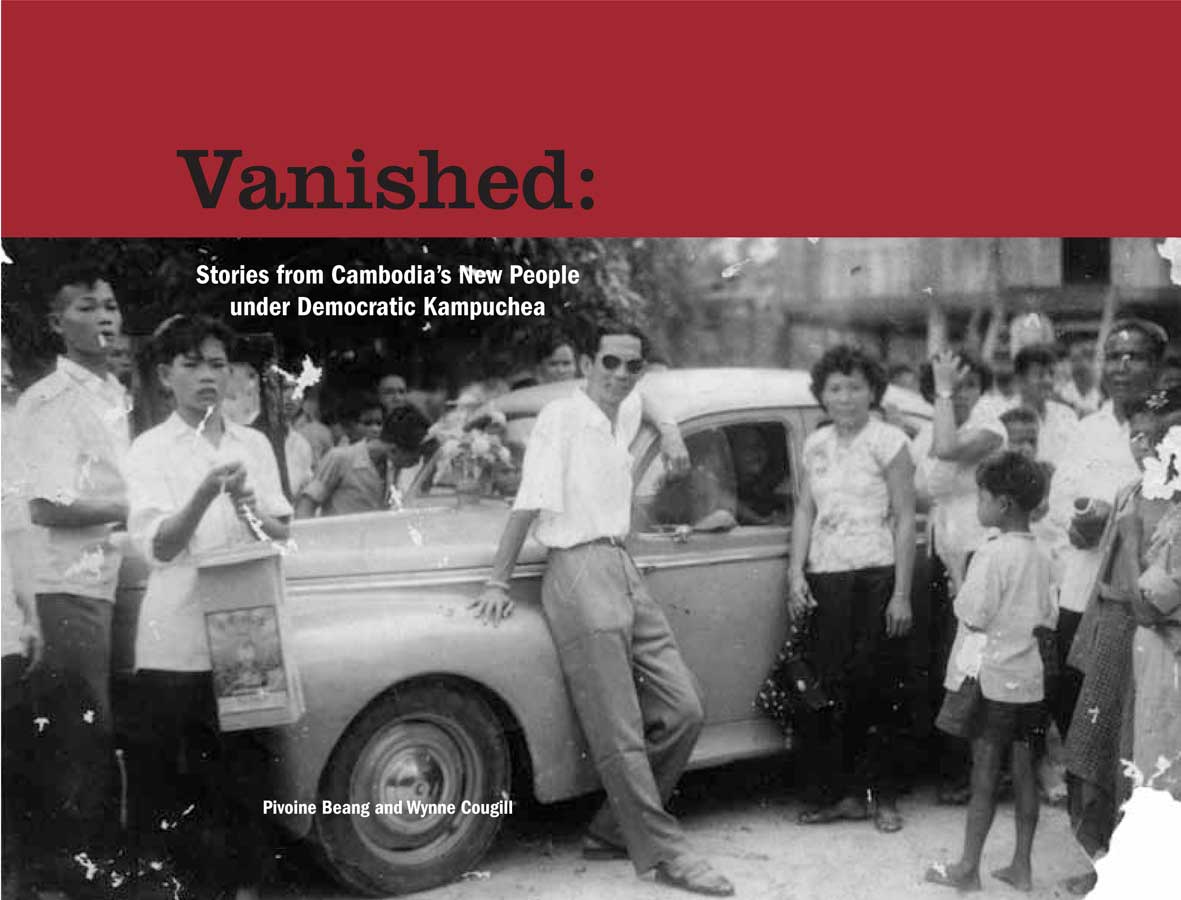 |
Vanished:
Stories from Cambodia’s New People under
Democratic Kampuchea
Pivoine
Beang and Wynne Cougill
Translated by Chy Terith
2007
(USD15)
|
|
For
centuries, Cambodia’s rural peasants had lived in modest
circumstances with few entitlements, while the country’s tiny urban
elite enjoyed more opportunities and privileges. But in April 1975
when the Khmer Rouge took control of Cambodia, they reversed this
social order.
Hundreds
of thousands of city dwellers were evacuated to the countryside,
where they were forced into hard labor. Despised by the peasants and
Khmer Rouge cadres alike, these “new people” were viewed as
parasites and imperialists, and their rights and privileges were
removed. As many as two-thirds of them were executed or died as a
result of starvation, untreated diseases, or overwork.
In this
monograph, 52 new people who survived Democratic Kampuchea tell
their stories and those of their loved ones under the Khmer Rouge.
Funding provided by the National Endowment for Democracy (NED) with
core support from the Swedish International Development Cooperation
Agency (Sida) and the United States Agency for International
Development (USAID).
|
|
|
|
|
|
 |
The
Khmer Rouge Tribunal
John D.
Ciorciari
Translated by Dy Khamboly
2008
(USD7)
Between April 1975
and January 1979, the radical Khmer Rouge regime subjected
Cambodians to a wave of atrocities that left over one in four
Cambodians dead. For nearly three decades, call for |
|
justice went
unanswered, and the architects of Khmer Rouge terror enjoyed almost
unfettered impunity. Only recently has a tribunal been established
to put surviving Khmer Rouge officials on trial. This edited volume
examines the origins, evolution, and feature of the Khmer Rouge
Tribunal. It provides a concise overview of legal and political
issues surrounding the tribunal and answers key questions about the
accountability process. It explains why the tribunal took so many
years to create and why it became a "hybrid" court with Cambodians
and international participation. It also assesses the laws and
procedures governing the proceedings and the likely evidence
available against Khmer Rouge defendants. Finally, it discusses how
the tribunal can most effectively advance the aims of justice and
reconciliation in Cambodia and help to dispel the shadows of the
past.
|
|
|
|
|
|
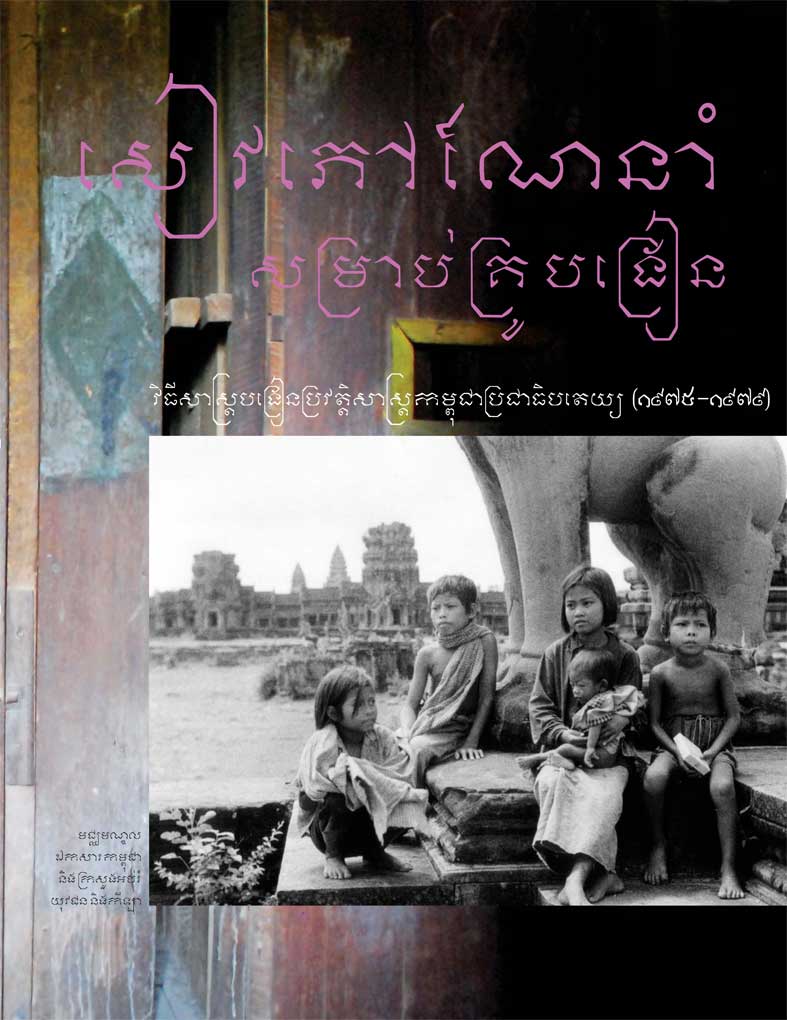 |
The Teacher Guide Book:
The Teaching of "A History of Democratic Kampuchea
(1975-1979)”
Phala Chea, Ed.D, & Christopher Dearing, Esq
Translated by Pheng Pong-Rasy, Dy Khamboly
2010
(USD20)
This
guidebook would not have been possible without the hard work of
countless individuals, some of whom have been instrumental to its
success. I would like to thank H.E. Mr. Im Sethy |
|
for both his
commitment to genocide education for Cambodia’s children and his
commitment to justice for Khmer
Rouge victims. I would also like to thank H.E. Ms. Tun Sam Im for
her tireless efforts to ensure that
genocide education benefits all students in Cambodia. I am grateful
to Dr. Chea Phala and Christopher
Dearing who prepared the text, the translation and editing team, the
24 national and international
teachers, experts, and scholars who helped produce this important
guidebook. Generous financial
contributions from Belgium, Denmark, Norway, Sida (Sweden), USAID
(USA), and Canada, along with
their unyielding support to global genocide prevention and
Cambodia’s future, have also made this
project a reality. Lastly, I wish to thank Dr. Hun Manet whose
support and encouragement helped me get
the textbook, A History of Democratic Kampuchea (1975-1979), off the
ground and Mr. Khamboly Dy
for his hard work in writing the first ever textbook on the Khmer
Rouge period.
This guidebook will be used across Cambodian high schools, reaching
an estimated one million students
from grades 9-12. As part of DC-Cam’s Genocide Education Project,
more than 3,000 high school
teachers will be trained on how to teach A History of Democratic
Kampuchea (1975-1979). Only by
leaning from the past can we begin to reconnect all the pieces of
our broken nation. I am humbled to
be one of the servants of this important and noble mission for
Cambodia and for my mother. This project has become the Truth
Commission of Cambodia.
Youk Chhang
Director of Documentation Center of CambodiaFunding provided by the author.
|
|
|
|
|
|
 |
THE HIJAB OF CAMBODIA
Memories of Cham Muslim Women after the Khmer Rouge
Farina So
Documentation Series No 16 -- Documentation Center of Cambodia
2011
(USD15)
|
|
This book
examines Cham Muslim women’s experiences under the Khmer Rouge
regime through the complexities of memory and narrative and uncovers
compelling stories of survival and resistance. Khmer Rouge genocidal
policies ruptured ethnic and religious identities and resulted in
the disproportionate death of the Cham group. Guided by their
desire to preserve their families and their cultural identity, Cham
women sometimes complied with Khmer Rouge policies, and sometimes
secretly resisted. Their recollection of this era and lost family
members contributes to the preservation of the Cham identity for
future generations, as well as the collective memories of all
Cambodians.
ABOUT THE
AUTHOR
So Farina
has worked at the Documentation Center of Cambodia since 2003 and is
currently team leader of its Cham Oral History project, which
records the Cham Muslim community’s memories of the Khmer Rouge era
(1975-79). This research monograph, drawn from Ms. So’s master’s
thesis, focuses on Cham Muslim women’s experiences under the Khmer
Rouge.
Ms. So
holds a BA in Accounting and Finance from National University of
Management (Cambodia) and an MA in International Affairs with a
concentration in Southeast Asian Studies from Ohio University (USA).
She has participated in international programs related to genocide,
oral history, Islam in Southeast Asia, memorialization, information
and technology, and truth commissions in Indonesia, Bangladesh,
Thailand, Germany, Malaysia, South Korea, and the United States.
Besides Khmer, her native language, she is fluent in English and
familiar with Bahasa Indo- alay and Cham.
Hijab:
Headscarves are scarves covering most or all of a woman’s hair and
head. The Arabic word hijab, which refers to modest behavior or
dress in general, is often used to describe the headscarf worn by
Muslim women. Muslim women wear the hijab for religious reasons,
including the desire to be judged for their morals, character, and
ideals instead of their appearance.
Funding for
this project was generously provided by the Open Society Foundations
(OSF) with core support from U.S. Agency for International
Development (USAID) and Swedish International Development Agency (Sida).
|
|
|
|
|
|
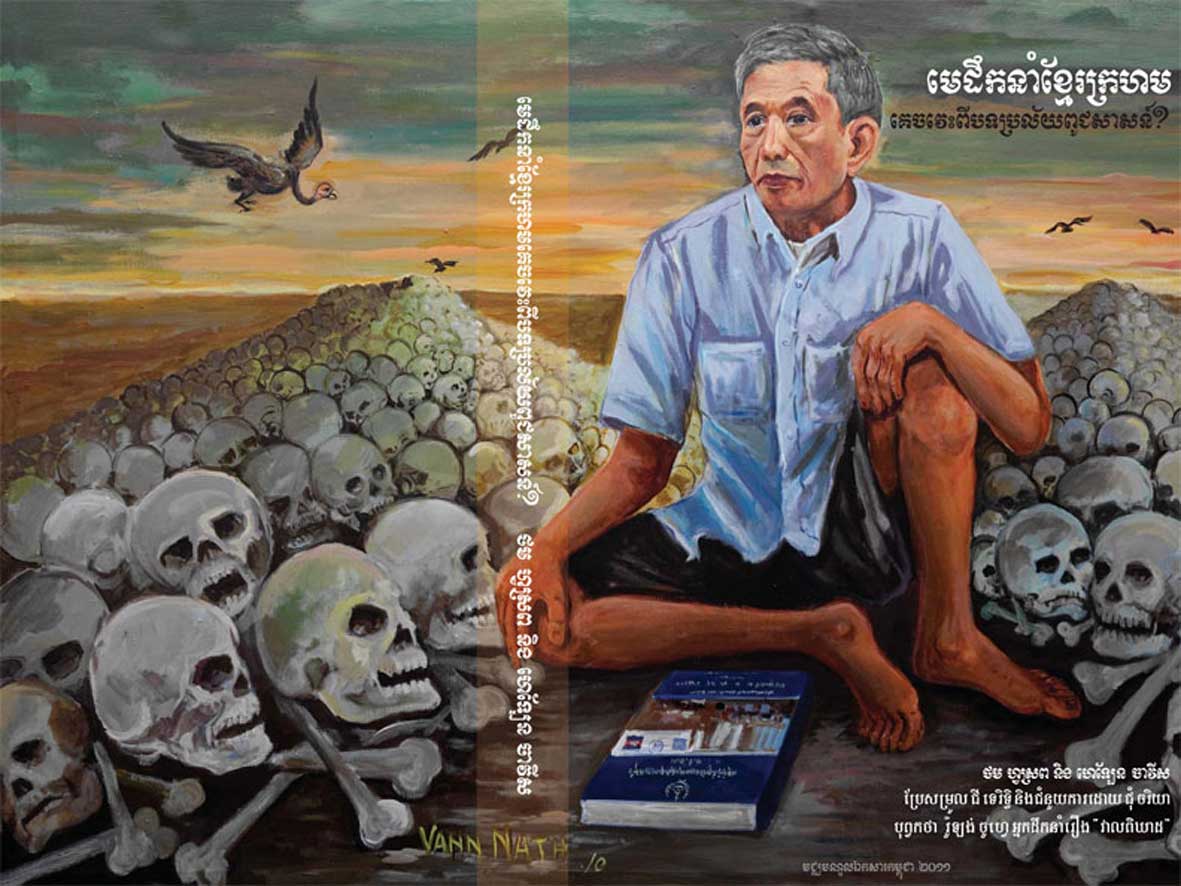
This Khmer Translation is dedicated to Vann Nath, famous Cambodian
painter and one of the few survivors of Tuol Sleng prison, who died
on 5 September 2011, just as this book was in the final stages of
production. The cover is Vann Nath’s untitled last major work
depicting Duch as he faces the consequences of his crimes, sitting
in a field of skulls of the victims with the judgment of the Trial
Camber of the ECCC in front of him. (Vann Nath’s family kindly gave
permission to us to reproduce this work. Photo courtesy of Jim
Mizerski)” |
Getting Away with Genocide?
Elusive Justice and the Khmer Rouge Tribunal
Helen Jarvis and Tom Fawthrop
Translated by Chy Terith with Chum Charya
2011
(USD12)
Twenty-five years
after the overthrow of the Pol Pot regime, not one Khmer Rouge
leader has stood in court to answer for their terrible crimes. Tom
Fawthrop and Helen Jarvis show how governments that often speak the
language of human rights shielded Pol Pot and his lieutenants from
prosecution during the 1980s. After
Vietnam ousted the Khmer Rouge regime in 1979, the US and UK
governments backed the Khmer Rouge at the UN, and approved the
re-supply of Pol Pot’s army in
Thailand. The authors explain how, in the late 1990s, the forgotten
genocide became the subject of serious UN inquiry for the first
time. Finally, in 2003, the UN and the
Cambodian government agreed to hold a trial in Phnom Penh conducted
jointly by international jurists and Cambodian |
|
|
|
|
|
|
|
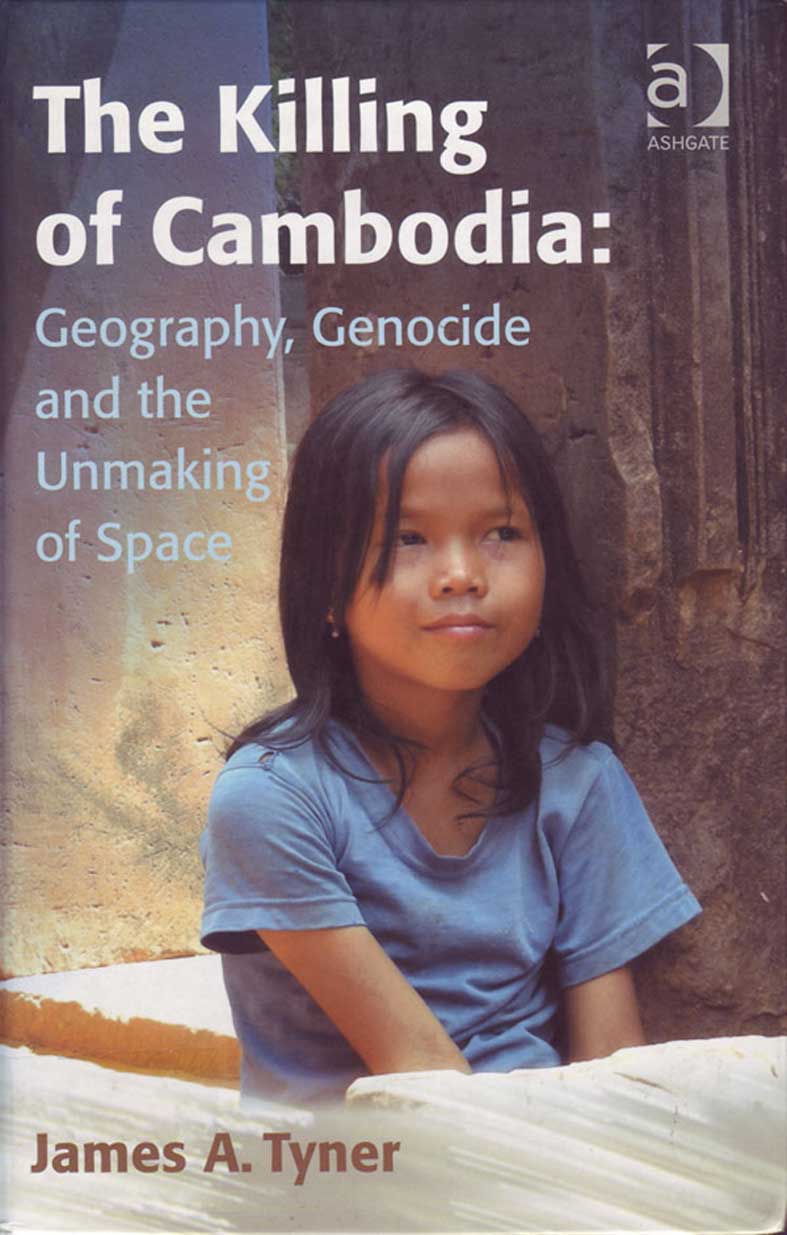 |
The Killing of Cambodia:
Geography, Genocide and the Unmaking of Space
James A. Tyner
Translated by Y Manoka, Keo Ratanatepy,
Kouy Bun Rong, Veng Visal
2012
Bio of Translators
Between 1975 and
1978, the Khmer Rouge carried out genocide in |
|
Cambodia
unparalleled in modern history. Approximately 2 million died –
almost one quarter of the population. Taking an explicitly
geographical approach, this book argues whether the Khmer Rouge's
activities not only led to genocide, but also terracide – the
erasure of space.
In the Cambodia of 1975, the landscape would reveal vestiges of an
indigenous pre-colonial Khmer society, a French colonialism and
American intervention. The Khmer Rouge, however, were not content
with retaining the past inscriptions of previous modes of production
and spatial practices. Instead, they attempted to erase time and
space to create their own utopian vision of a communal society. The
Khmer Rouge's erasing and reshaping of space was thus part of a
consistent sacrifice of Cambodia and its people – a brutal
justification for the killing of a country and the birth of a new
place, Democratic Kampuchea.
While focusing on Cambodia, the book provides a clearer geographic
understanding to genocide in general and insights into the
importance of spatial factors in geopolitical conflict.
|
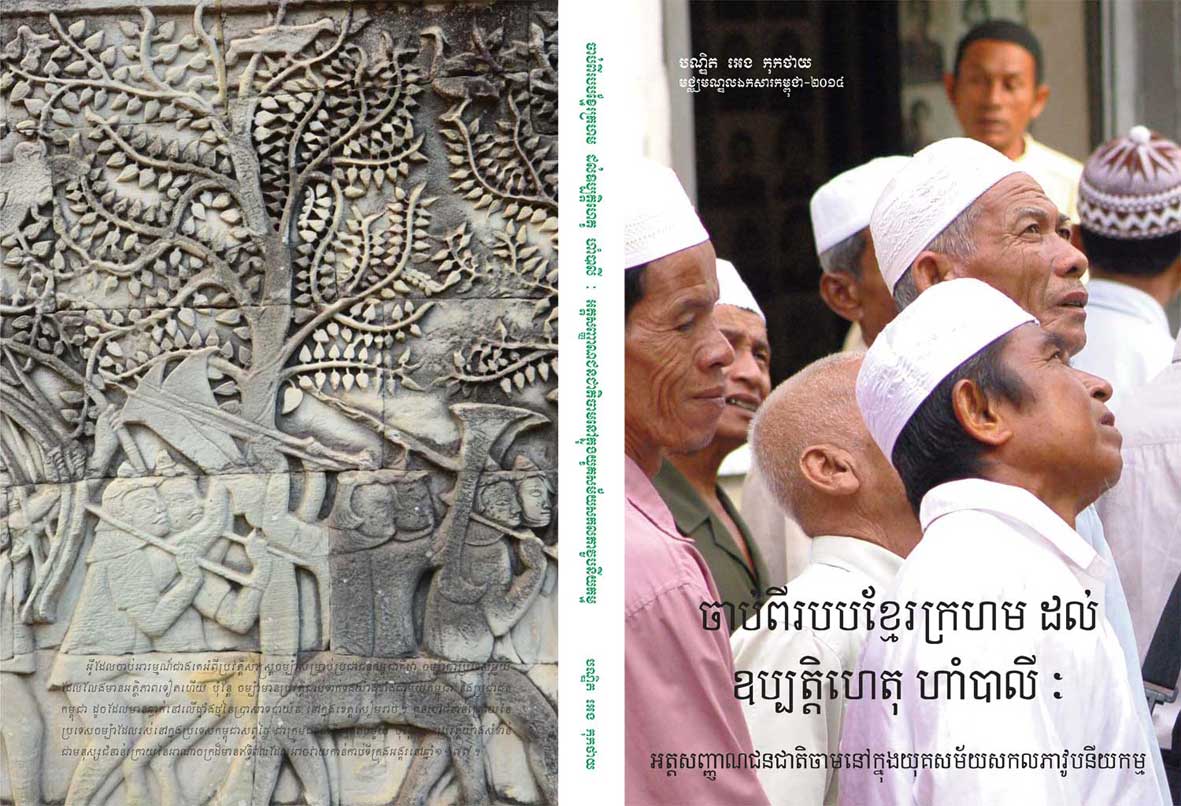 |
From The Khmer Rouge to Hambali:
Cham Identities in a Global Age
Kok-Thay ENG, Ph.D.
Translated by Huy Samphors, Sirik Savina
2014
(USD12) |
|
This book explores different forms of Cham identity in relation to this minority's history,
society and culture. It has three goals: first, to provide the most comprehensive overview
of Cham history and social structure; second, to illustrate how Cham identities have
changed through time; and third, to consider whether in the aftermath of Democratic
Kampuchea and the Cold War Cham became radicalized. Its theoretical position is that the
group's religious, ethnic and other social identities can be classified as core (those that are
enduring) and peripheral (those that are more changeable depending on new social and
global contexts). Core identities include being Muslim (religious) and descendants from
Champa whose indigenous language is Cham. Peripheral identities are sectarian, economic
and political.
As immigrants to Cambodia, Muslims, and victims of genocide, the Cham have been
associated with terrorism. In the process of constructing their peripheral identities, after
genocide and especially after the Cold War, they are suspected by some Khmer, foreign
governments and international observers of having links with, attempting to and
committing acts of terrorism, both in Cambodia and southern Thailand. Other factors such
as weak secular education, unregulated and open Islamic revival, and the strong need for
overall community development, such as improved living standards and education, led to
further suspicions of terrorism. Cambodia's weak rule of law, fledgling financial system,
immature anti-terrorist measures, corruption and porous borders also contributed to the
terrorist stigmatization of the Cham.
Terrorism is at the pinnacle of the problems facing the Cham in their attempt to revive
their community and reconstruct their peripheral identities. Little has been studied about
the Cham. By examining the Cham's origins in Champa, their arrival in Cambodia, religious
conversion, political affiliations, and social structure, it is possible to understand better
their core identities as ethnic Cham and Muslims and whether they have become
radicalized. In addition, this book will shed light on the ways in which their peripheral identities change over time and how these identities are affected in an age in which Islamic
revival, global aid and terrorism bring fresh challenges to the community.
This research seeks to contribute to the study of identities of an Islamic and ethnic
minority group in a Buddhist majority country as the group recovers from genocide, is
increasingly exposed to global flows, and suffers from the threat of being pulled into global
terrorism. It seeks to contribute to our understanding of the Cham which receives little
scholarly attention. It also attempts to contribute to the study of identity.
Author Biography:
Eng Kok-Thay: Kok-Thay received his Ph.D. Degree in Global Affairs at Rutgers University in
2012. Born into an impoverished family in Chi Kreng district, Siem Reap province, Kok-Thay
is the only son in a family of five siblings. As a child Kok-Thay frequently swam Chri Kreng
River, which he jumped into from an ancient bridge spanning the river. Chi Kreng district is
an area around Tonle Sap Lake where the Khmer Rouge frequently attacked in the 1980s
and early 1990s. Accordingly, Kok-Thay's family fled to Siem Reap provincial town in 1991.
Angkor temples became his playground, although some of the temples were still controlled
by the Khmer Rouge. Attempting to understand the Cambodian genocide and civil war,
Kok-Thay volunteered for the Documentation Center of Cambodia (DC-Cam) in 2001. Kok-
Thay translated "The Journey into Light," a historical autobiography by a Cambodian
American, which was published in 2005. Before coming to Rutgers University, Kok-Thay
received his M.A. in Peace and Conflict Studies from Coventry University. In 2007, Kok-Thay
completed his M.S. degree in Global Affairs with support of a Fulbright Scholarship.
Currently, Kok-Thay is a Research Director and Deputy Director at DC-Cam. In this capacity,
he has worked with scholars from around the world on their research on Khmer Rougerelated
topics. He is currently supervising several research projects, and he also leads the
Book of Memory project, which aims to document two million names and biographies of
people who died under the Khmer Rouge. His research on the experiences of Cham people
under the Khmer Rouge and their level of radicalism today is also being published by DCCam. |
|
|
|
|
 |
A History of The Anlong Veng Community
Khamboly Dy and Christopher Dearing
Translated by Men Pechet
2015
(USD15)
|
|
History invites moral judgments, and in studying the people of Anlong Veng, it is easy to slip into an accusatory mindset. Anlong Veng was the final stronghold of the notorious Khmer Rouge regime—a regime which was responsible for perpetrating genocide, mass atrocity, and incalculable harm on the fabric of Cambodian society. It is believed that over two million people died during the regime, and to this day the country still struggles with the byproducts of this history. Many of Anlong Veng's residents were former Khmer Rouge soldiers and cadres, and without a doubt many either participated or assisted in violent acts.
The reverse can also be said, which is that in studying the people of Anlong Veng, it might be easy to slip into an empathetic mindset in which the horrors of the regime and move-ment fade in relation to the stories and personal struggles of its individual members. Thousands of cadres and their families—including high-ranking communist leaders— were arrested and murdered throughout the country. The regime arrested, tortured, and killed members who joined the movement from its earliest days, and there was often little recourse or escape if one was suspected of disloyalty. Without a doubt, terror became a universal blanket that enslaved the society as a whole.
Even after the regime fell, the Cambodian population—both within and outside of Khmer Rouge-controlled territory—suffered incredibly. The over-ten-year war between Vietnam¬ese forces and the Khmer Rouge produced thousands of casualties on all sides. For several years the people were largely dependent on humanitarian assistance, and famine and dis¬ease were a constant threat.
The purpose of this book is to neither condemn nor venerate the people of Anlong Veng. Instead, we hope to provide a view into an under-studied community and a voice to an otherwise under-heard people. It is a universal rule that conflict resolution and peace is built and sustained on an open-minded discussion of the past.
|
|
|
|
|
|
|
|
|
|
|
|